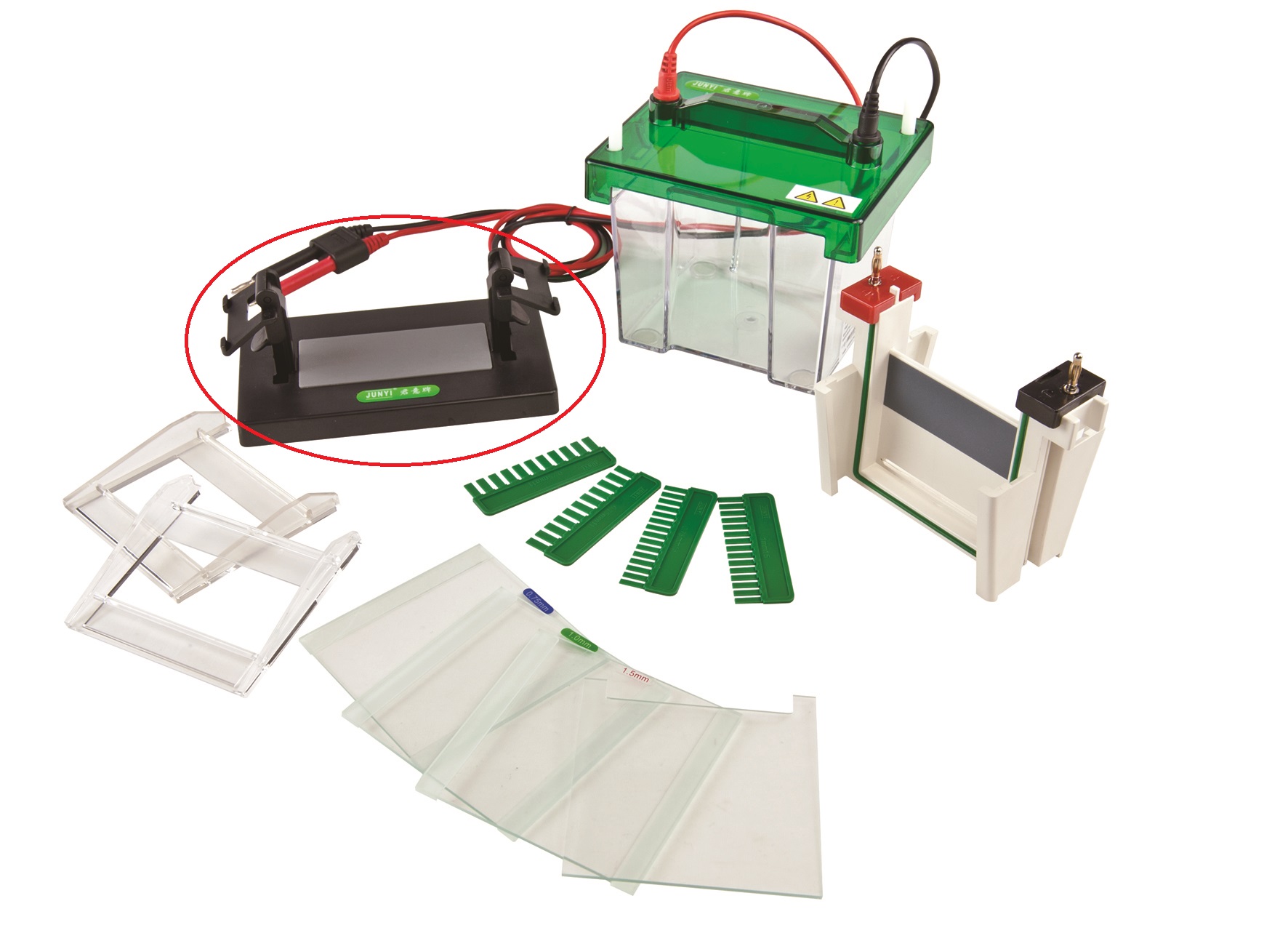Your shopping cart is empty!
MENU
- +
-
Categories+
- Blog +
- Contact Us +
- Login +
- Register +
 Whenever you’re studying proteins and nucleic acids (DNA, RNA) in the lab, there is a great chance that you’ll be running your samples through gel electrophoresis. After all, this is hands down one of the most effective methods you can use in separating your protein, DNA and RNA of interest from a mixture. As a result, gel electrophoresis is commonly used for many life sciences, mining and food sciences applications.
Whenever you’re studying proteins and nucleic acids (DNA, RNA) in the lab, there is a great chance that you’ll be running your samples through gel electrophoresis. After all, this is hands down one of the most effective methods you can use in separating your protein, DNA and RNA of interest from a mixture. As a result, gel electrophoresis is commonly used for many life sciences, mining and food sciences applications.
Gel Electrophoresis: How Does It Work?
If you want to separate your proteins or nucleic acids of interest using this method, you’ll need to run your samples through a gel apparatus which contains a cathode on one end, an anode on the other, and a platform that holds a porous gel matrix in the middle (usually agarose or acrylamide gel). An appropriate buffer is added to create a charge gradient upon the application of an electric current. And since the gel can heat up when a charge is applied, the buffer helps to keep the gel cool and prevent it from overheating.
Since proteins and nucleic acids both have a uniformly net-negative charge, these molecules will naturally migrate towards the positive electrode upon the application of an electric current. Since smaller molecules can easily move through the pores of the gel matrix, you can expect them to migrate through the gel matrix faster than the larger molecules. Once the process is completed, you’ll see some distinct, lovely bands of proteins and nucleic acids separated based on their molecular weights.
Horizontal vs. Vertical Electrophoresis: Understanding Their Differences
Basically, there are two main types of gel electrophoresis that you can use for your application - horizontal gel electrophoresis and vertical gel electrophoresis. While both systems follow a similar theory of gel electrophoresis, there are some key differences between them. How do these systems differ and when should you choose one over the other? Let’s take a look.
Orientation and Buffer System. One of the key differences between the two systems is their orientation. In horizontal gel electrophoresis, the gel matrix is cast horizontally and submerged in a continuous running buffer while in vertical gel electrophoresis, the gel is vertically oriented and the buffer system is discontinuous.
Additionally, the vertical gel system makes use of two chambers - a top chamber which contains the cathode and a bottom chamber which contains the anode. Both chambers contain electrodes that create the necessary electric field. Next, a bit of gel is poured between two mounted glass plates so the bottom of the gel is immersed in buffer in one chamber while the upper part is immersed in buffer in another chamber. Upon the application of an electric current, a small amount of buffer moves down the chamber via the gel. Since the buffer flows exclusively through the gel, you can have complete control of voltage gradients throughout the separation process. This means you can expect a more effective separation and greater resolution when you use the vertical electrophoresis system.
Gel. Horizontal gel electrophoresis uses agarose gel while vertical gel electrophoresis uses acrylamide gel. Agarose gels have larger pores (100 to 500 nm in diameter) while acrylamide gels have smaller pores (10 to 200 nm in diameter). Acrylamide cannot be used for horizontal gel electrophoresis since, in this method, the gel is exposed to atmospheric oxygen. As you may know, the presence of oxygen inhibits the polymerization of acrylamide and interferes with the formation of the gel. However, you are free to use acrylamide gel in vertical gel electrophoresis since the buffer only flows through the gel and the individual compartments are not exposed to atmospheric oxygen.
When to use either technique. Horizontal gel electrophoresis is mainly used in separating mixtures containing DNA and RNA molecules while vertical gel electrophoresis is ideally used in separating proteins.
Leave a Comment